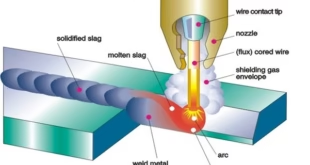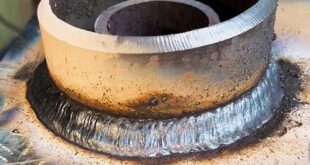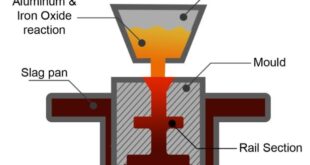Materials Used in Hot Wedge Welding
Hot Wedge Welding is specifically designed for thermoplastics, offering a reliable method for welding materials with a thickness ranging from 0.2mm to 2mm. This method is particularly well-suited for materials like PVC and TPU– and PVC-coated materials due to its controlled temperature and pressure settings. The versatility of Hot Wedge Welding lies in its ability to handle multiple layers simultaneously, making it an ideal choice for various applications where other welding methods might fall short.
Safety Considerations
Safety is paramount in any welding process, and Hot Wedge Welding is no exception.
- Noise and Emission Levels: Hot Wedge Welding machines are preferred for creating a quiet and low-emission work environment compared to other welding methods. This is crucial for the well-being of operators and those in proximity to the welding site.
- Proper Ventilation: Adequate ventilation is essential to disperse any residual heat or fumes generated during the welding process. Ensuring a well-ventilated workspace contributes to a safer working environment.
- Equipment Maintenance: Regular maintenance checks are necessary to ensure the equipment operates efficiently, minimizing safety risks. This includes inspecting the heating element, pressure mechanisms, and any other components integral to the welding process.
- Training and Certification: Operators should undergo proper training and certification to ensure safe and effective use of Hot Wedge Welding equipment. This training covers not only the operational aspects but also emphasizes the importance of adhering to safety protocols.
Hot Wedge Welding Techniques
- Single-Track vs. Dual-Track Welding: Understanding the nuances between single-track and dual-track welding techniques is crucial for welders. Single-track welding may be suitable for certain applications, while dual-track welding offers advantages such as increased speed and seam integrity.
- Channel Testing for Seam Integrity: The creation of a channel during dual-track welding serves a critical role in testing seam integrity. Exploring the significance of this channel and how it aids in quality control ensures that the weld meets the required standards.
Advantages of Hot Wedge Welding
- Seam Quality: The controlled temperature and pressure in Hot Wedge Welding contribute to superior seam quality. Understanding how these factors impact the final weld ensures consistent and durable results.
- Cost Efficiency: Analyzing the cost-efficiency of Hot Wedge Welding involves considering factors such as material usage, energy consumption, and labor. Understanding the economic benefits helps businesses make informed decisions regarding welding methods.
Hot Wedge Welding vs. Other Welding Methods
- Comparison with High-Frequency Welding: Contrasting Hot Wedge Welding with high-frequency welding techniques provides insights into when each method is most advantageous. Factors such as material compatibility and application requirements play a significant role in determining the optimal welding approach.
- Hot Wedge vs. Hot Air Welding: Examining the differences in functionality, speed, and application suitability between Hot Wedge Welding and hot air welding allows for a nuanced understanding of when to choose one method over the other. This comparison aids welders in selecting the most appropriate technique for specific projects.
Tips for Optimizing Hot Wedge Welding
- Temperature and Pressure Control: Providing guidelines on maintaining optimal temperature and pressure settings for different materials is essential. Variations in these parameters can significantly affect the quality and strength of the weld.
- Pre-Welding Surface Preparation: Emphasizing the importance of preparing welding surfaces before initiating the Hot Wedge Welding process ensures strong and durable welds. Proper cleaning and surface prepping techniques contribute to the overall success of the welding operation.
Troubleshooting Common Hot Wedge Welding Issues
- Uneven Welding Surfaces: Addressing common issues related to welding on soft or uneven surfaces is crucial for achieving uniform and high-quality welds. Troubleshooting tips and solutions help welders overcome challenges in various working conditions.
- Material Flutter in Hot Air Welding: Comparing Hot Wedge Welding with hot air welding regarding material flutter issues and providing troubleshooting tips for minimizing flutter in specific applications ensures smoother welding operations.
Innovations in Hot Wedge Welding Technology
- Automated Hot Wedge Welding Systems: Exploring advancements in automation for Hot Wedge Welding processes sheds light on how technology is enhancing efficiency, accuracy, and repeatability. Automated systems contribute to increased productivity and reduced labor costs.
- Integration with Digital Technologies: Highlighting the integration of digital technologies, such as sensors and control systems, in modern Hot Wedge Welding equipment showcases the industry’s progress. These technological enhancements improve welding precision and reliability, aligning with the demands of contemporary manufacturing processes.
By delving into these detailed aspects of Hot Wedge Welding, both novice and experienced welders can enhance their understanding of the method, troubleshoot common issues, and stay updated on technological advancements, ultimately contributing to more effective and informed welding practices.
FAQs
What materials are suitable for Hot Wedge Welding?
Hot Wedge Welding is designed for thermoplastics, including PVC and TPU-coated materials, with a thickness ranging from 0.2mm to 2mm.
How does Hot Wedge Welding differ from other welding methods?
Unlike high-frequency welding or hot air welding, Hot Wedge Welding utilizes a heated metal wedge to melt thermoplastics, offering advantages in terms of seam quality, speed, and portability.
What safety precautions should be taken during Hot Wedge Welding?
Ensure proper ventilation to disperse heat and fumes, conduct regular equipment maintenance, and provide training for operators. Safety certifications are crucial for creating a secure work environment.
Can Hot Wedge Welding be used for curved work and multiple seams simultaneously?
Yes, Hot Wedge Welders can be set up for creating curved seams and can perform multiple welds simultaneously, making them versatile for various applications.
What are the advantages of Hot Wedge Welding in terms of cost efficiency?
Hot Wedge Welding offers cost-effective solutions through efficient material usage, energy consumption, and labor, making it a preferred choice for many industrial applications.
How does Hot Wedge Welding address issues related to uneven welding surfaces?
Hot Wedge Welding excels in welding on soft or uneven surfaces, providing tips and solutions to achieve uniform and high-quality welds.
What innovations are shaping the future of Hot Wedge Welding technology?
Advancements in automation and integration with digital technologies, such as sensors and control systems, are enhancing precision, efficiency, and repeatability in Hot Wedge Welding.
Can Hot Wedge Welding be used for geothermal membrane assembly?
Yes, Hot Wedge Welding is the preferred method for field-assembling large-area geothermal membranes, especially thick HDPE-coated industrial materials requiring dual-track welding for consistent speeds and seam integrity testing.

 Welding of Welders All about Welding and Welders
Welding of Welders All about Welding and Welders



